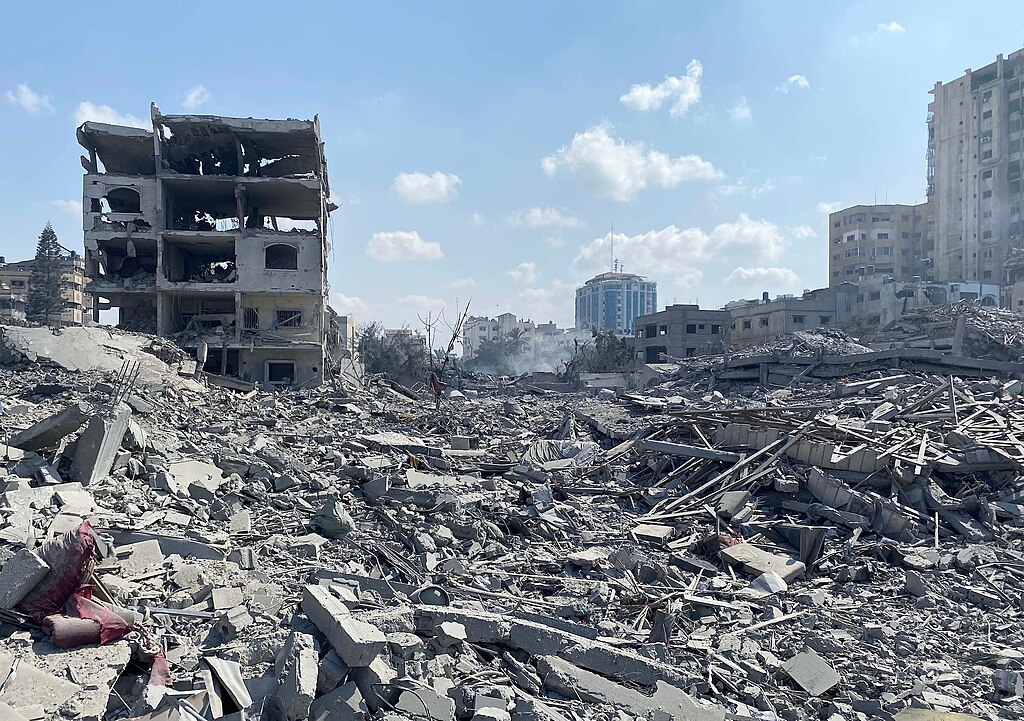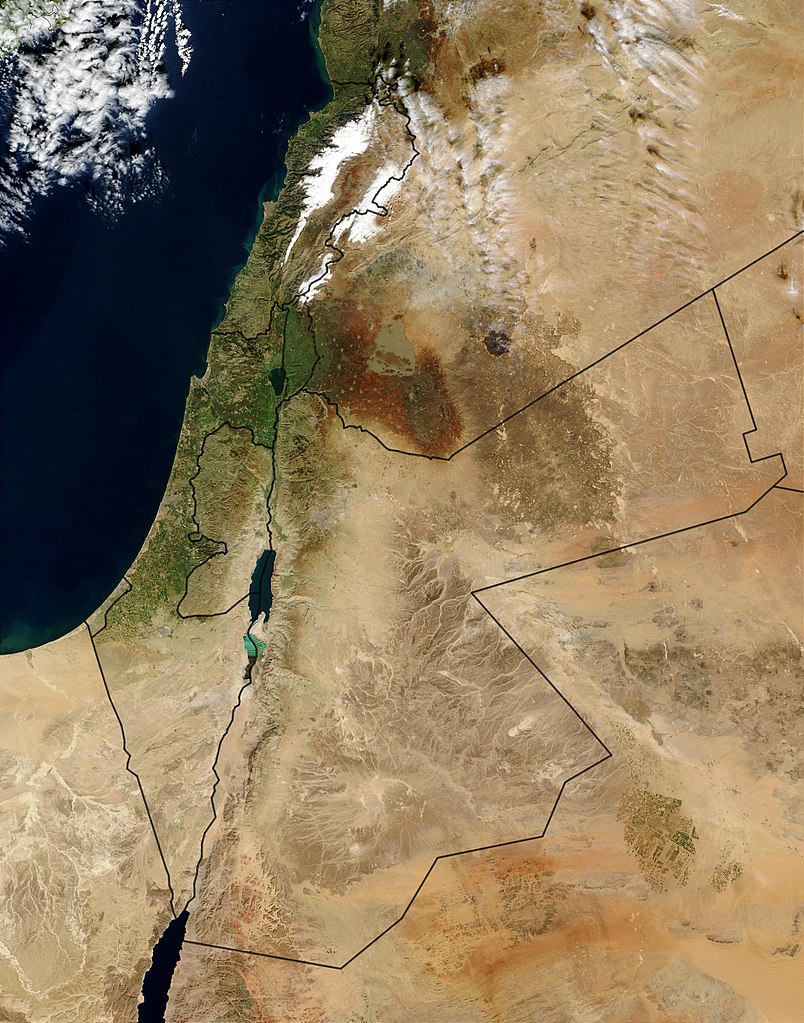The staggering human cost of the war in Gaza has been dominating the headlines for the last fifteen months. As the first phase of the latest ceasefire enters into effect, it is estimated that almost 1,200 people died as a result of the terrorist attacks launched by Hamas against Israel on October 7, 2023, and around 400 more Israelis lost their lives in the ensuing military intervention in Gaza. The human cost of the conflict for the population of Gaza, meanwhile, has reached tragic levels. According to UN data, the war has caused more than 45,000 deaths – including more than 13,000 children, 7,000 women, and 3,000 elderly people.
The conflict in Gaza is also having a very significant economic impact. The economic consequences of the war have been truly apocalyptic for the Gaza Strip and extremely negative for the population of the Palestinian territories in general. Moreover, the conflict has profoundly affected the Israeli economy, stretching the country’s financial resources so thin and stressing its workforce so much that it is fair to argue that a major rethinking of the country’s economic structure will be necessary to achieve any meaningful post-conflict recovery.

Operation Swords of Iron – the Israeli military campaign in the Gaza Strip – has had tremendously destructive effects on the Palestinian territories – both short- and long-term. According to the World Bank, the war in Gaza represents the greatest economic shock suffered by Gaza and the West Bank in the last two decades. In 2024, the real GDP of the Palestinian territories contracted by 26%. As reported by the UN Conference on Trade and Development (UNCTAD), between late 2023 and early 2024 Gaza’s GDP fell by 81%, while the West Bank experienced a 19% contraction and a jump in unemployment, which reached 32%. Since October 2023, more than 150,000 Palestinians have seen their permits to work in Israel revoked. This development has been particularly painful because remuneration in Israel tends to be better than in the Palestinian territories. Such a loss, however, has also seriously affected the Israeli economy: Palestinians represented around 4% of the country’s workforce, and were employed in sectors such as construction and agriculture. In Gaza, unemployment has gone from 45% to 79%. Data collected by the World Bank suggest that inflation in the Strip has reached 300%, and the price of food has jumped even higher. The collapse in economic activity has touched each and every sector of the Palestinian territories, with agriculture – a traditional shock absorber – particularly affected. The war has also made it more difficult for international assistance to reach the Palestinian territories. According to the UN Office for the Coordination of Humanitarian Affairs (OCHA), in 2024 the Palestinian Authority (PA) received around 2.82 billion US dollars in international economic assistance. The PA receives most of its funding in the form of transfers from the Israeli government but these transfers are often delayed or suspended. Such a trend has become even more pronounced in the aftermath of the October 7, 2023 terrorist attacks. As reported by UNCTAD, since October 2023, the Israeli government has systematically reduced the transfers by 75 million dollars per month – the amount of money needed to guarantee the administration of the Gaza Strip.
Even before October 2023, Gaza suffered from higher unemployment and lower living standards than the West Bank. The war, however, brought these structural disadvantages to extreme levels. As observed by the World Bank, the Gaza Strip hosts 40% of the population of the Palestinian territories – 2,141,643 people distributed over an area of 360 square kilometers (around 139 square miles). As a consequence of the war, Gaza’s share of the Palestinian economy has collapsed from 17% to 3.5%. It is estimated that 75% of the population of the Strip – including hundreds of thousands of children – is in a situation of internal displacement and deprived of stable access to food, water, electricity, and fuel.

The long-term economic impact of the war is also extremely daunting. The intensity of the air component of the Israeli intervention has been compared to the Allied campaign against Germany in World War II. According to UN satellite imagery analysis, by December 2024 a total of 170,812 structures – 69% of all structures in the Gaza Strip – had experienced damage as a result of military operations, with 60,368 structures completely destroyed. Data suggests that by spring 2024, 88% of Gaza’s schools and educational institutions had been damaged or destroyed. Before the beginning of the war, almost 50% of Gaza’s population was under the age of 18. It is not unrealistic to predict that, deprived of an education and a future of economic opportunities, many young and traumatized Gazans will fall into the arms of Hamas and other terrorist organizations. In fact, evidence shows that Hamas is taking advantage of the ceasefire to reestablish its control over the Gaza Strip and has already managed to recruit new militants. Along with precious public infrastructure such as schools and hospitals, 245,123 housing units are estimated to have sustained damage. The most affected areas are northern Gaza and Rafah, in the south of the Strip. The campaign has also severely damaged croplands and Gaza’s road network. According to the World Bank, by March 2024 the amount of the damage was 18.5 billion dollars. It is estimated that it will take several years just to clean up the area, while 50 billion dollars might be needed to rebuild the Gaza Strip.
The war in Gaza has had a negative impact on the Israeli economy as well. Israel’s economy is dynamic, diversified, and resilient – with a world-class hi-tech sector. According to IMF data, the country has a per capita GDP of around 54,000 dollars – comparable to many European countries. However, as recognized by Bezalel Smotrich, Israel’s finance minister, “Israel’s economy bears the burden of the longest and most expensive war in the country’s history.” Even before the outbreak of the conflict, Israel was spending around 5% of its GDP on defense. The war in Gaza – with its ramifications in southern Lebanon, Syria, the West Bank, and Yemen – has dramatically increased the country’s military budget. Israel’s central bank estimates that by the end of 2025 the cost of the war will reach 66 billion dollars – 12% of the country’s GDP. According to the OECD, the war has turned a modest national budget surplus into a substantial deficit – 4.1% of GDP in 2023 and 7.5% in 2024 – while the Israeli government debt has surpassed 66% of GDP and is projected to grow even further in the next two years. This dynamic has induced rating agencies such as S&P and Moody’s to downgrade Israel’s credit rating. The Israeli government has tried to improve the country’s fiscal standing by adopting austerity policies. That decision, however, is likely to harm economic activity and hinder the recovery.

The conflict has in fact stifled the dynamism of the Israeli economy. IMF data indicates that Israel’s GDP growth rate went down from 6.4% in 2022 to 2% in 2023, and further collapsed to 0.7% in 2024. The war has had particularly negative effects on consumer confidence. The most severely affected sectors have been construction, tourism, restaurants and the hospitality sector in general. The conflict has also led to inflationary pressure. This trend is due to the increase in military spending as well as other factors such as supply chain disruptions and a manpower shortage. As already noted, Israel has lost 4% of its labor force due to the decision to revoke work permits previously granted to the Palestinians. The mobilization of more than 300,000 reservists has further disrupted the country’s labor force.
Israel has one of the highest levels of income inequality in the OECD, and for different reasons, two very important segments of Israeli society – the country’s Arab citizens and ultra-orthodox Jews – are economically marginalized. The war effort is severely testing the political and economic sustainability of such a reality, and is demonstrating the importance of rethinking Israel’s social contract and making it more inclusive. The insecurity generated by the war has also favored an increase in emigration. This trend could negatively affect the country’s ability to attract and retain talent – one of the key factors behind Israel’s success as a “Startup Nation.” The long-term prospects of the Israeli economy have also been negatively affected by other political initiatives promoted by the government led by Benjamin Netanyahu, such as a controversial judicial reform that might reduce investor’s confidence in the country’s justice system.

The Netanyahu government’s military response to the October 7, 2023 terrorist attacks carried out by Hamas has been extremely intense. This approach has achieved some important tactical successes, such as the substantial erosion of Hamas’s military capabilities as well as the elimination of the terrorist group’s political and military leadership. However, both the historical record and recent evidence suggest that such a strategy is unlikely to completely defeat the group and eliminate the terrorist threat it represents. At the same time, it is clear that the human cost of the war has been appalling, while the economic consequences of the war have been negative and unsustainable for all the parties involved. The conflict is also having severe economic implications on the regional level – such as the disruption of trade routes across the Red Sea – and is reducing the chances of a continuation of the process initiated by the Abraham Accords. A cessation of hostilities and substantial progress toward some form of Palestinian statehood seem to have become preconditions to the normalization of relations between Israel and Saudi Arabia.
In the aftermath of the January 16 ceasefire deal, the Tel Aviv stock market hit record highs. The announcement of the ceasefire had a similar effect on the stock markets of other Middle Eastern countries as well. Several economic analyses of the conflict – like the ones cited in this pages – calculate that a durable cessation of hostilities would not only dramatically improve the situation in the Gaza Strip, but also boost Israel’s economic recovery. The political and economic realities that characterize Israel and the Palestinian territories are very deeply intertwined. While conflict is having so many tragic effects, the revival of the peace process might open the path to stability and economic prosperity.
Diego Pagliarulo
